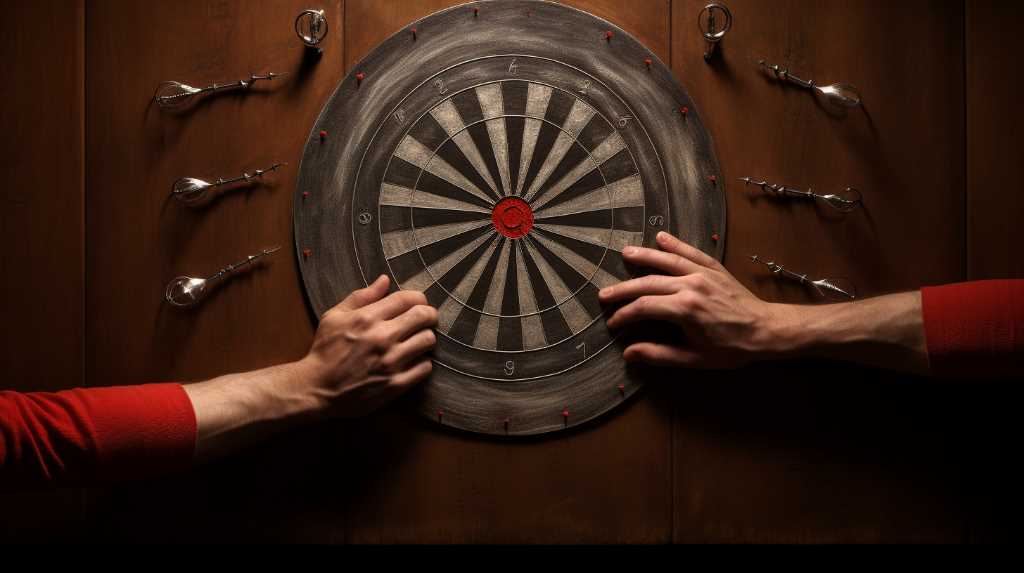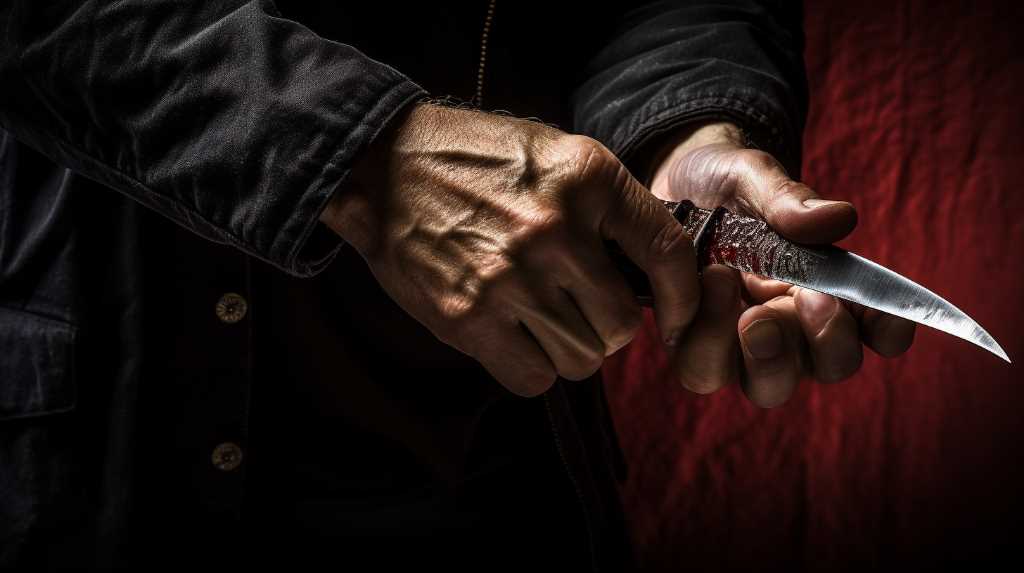
Welcome to our comprehensive guide on the various throwing techniques for throwing knives. Whether you are a professional knife thrower seeking to enhance your skills or a beginner eager to explore this art, this article will provide you with the knowledge and precision you need.
Through detailed explanations and expert insights, we will delve into the following throwing techniques:
- No-spin
- Half-spin
- Full-spin
- Rotational
- Overhead
- Sidearm
These techniques will empower you to master the intricacies of knife throwing and liberate your potential.
Key Takeaways
- The No-Spin Technique focuses on stability and control, using a steady hand and precise aim.
- The Half-Spin Technique requires two and a half spins for a controlled throw, offering greater range and versatility.
- The Full-Spin Technique requires a full 360-degree spin for enhanced accuracy and allows for utilization of a wider variety of knife designs.
- The Rotational Technique increases accuracy and precision through a smooth and controlled motion, with consistent grip and experimentation with release points.
The No-Spin Technique

The No-Spin Technique, a unique and intriguing approach to throwing knives, requires a steady hand and precise aim. Unlike other throwing techniques, the No-Spin Technique focuses on stability and control rather than rotation. Developed by knife-throwing experts, this technique allows for greater accuracy and consistency in hitting the target.
To execute this technique effectively, one must hold the knife by the blade, ensuring a firm grip. The thrower then uses a simple forward motion, without any rotation of the knife. The key lies in the release, which must be timed perfectly to achieve a straight and stable flight path.
With practice and patience, the No-Spin Technique can be mastered, providing throwers with a versatile and reliable throwing style that can be used in various scenarios.
The Half-Spin Technique

Two and a half spins are required to execute the Half-Spin Technique effectively, allowing for a controlled and accurate throw of a knife. This technique is widely used by knife throwers who desire liberation from the limitations of the No-Spin Technique.
The Half-Spin Technique offers a greater range and versatility, making it a popular choice among professionals. Here are three key elements of the Half-Spin Technique:
- Grip: Maintain a firm grip on the knife, ensuring that it is properly balanced for a smooth rotation during the throw.
- Stance: Assume a balanced and relaxed stance, with your dominant foot slightly forward. This will provide stability and help generate power for the throw.
- Release: As you bring your throwing arm forward, release the knife at the precise moment to achieve the desired spin. Practice and timing are crucial to master this technique effectively.
The Full-Spin Technique

Mastering the Full-Spin Technique requires precision and practice, as it allows knife throwers to achieve a seamless rotation and enhanced accuracy in their throws.
This technique involves gripping the knife's handle, positioning it with the blade pointing downwards, and executing a full 360-degree spin before releasing it towards the target.
The key to success lies in the thrower's ability to maintain a consistent grip and release point, ensuring that the knife completes a smooth rotation in the air.
The Full-Spin Technique offers several advantages, including increased distance and velocity, making it ideal for long-range throws. Additionally, it allows throwers to utilize a wider variety of knife designs, as the full rotation helps to stabilize the blade during flight.
With dedicated practice and attention to detail, knife throwers can master this technique and enhance their accuracy and performance.
The Rotational Technique

Utilizing a smooth and controlled motion, knife throwers can achieve optimal results with the rotational technique by maintaining a consistent grip throughout the entire rotation. This technique allows for increased accuracy and precision, making it a popular choice among experienced throwers.
Here are three key elements to consider when using the rotational technique:
- Grip: The grip is crucial in maintaining control and stability during the throw. It is essential to find a grip that feels comfortable and secure, allowing for a smooth release of the knife.
- Arm Movement: The rotational technique relies on a fluid and coordinated arm movement. It is important to maintain a consistent speed and trajectory throughout the entire rotation to ensure accuracy.
- Release Point: Identifying the optimal release point is vital for a successful throw. Experimenting with different release points will help determine the most effective spot for achieving the desired target.
The Overhead and Sidearm Techniques

The overhead and sidearm techniques, both effective in their own ways, offer throwers different options for achieving accuracy and power when throwing knives.
The overhead technique involves holding the knife with the blade facing downwards and throwing it in an arc motion over the shoulder. This technique allows for a greater distance and accuracy, as the knife follows a predictable trajectory.
On the other hand, the sidearm technique involves holding the knife with the blade parallel to the ground and throwing it in a straight-line motion. This technique offers greater speed and power, as the knife travels in a direct path towards the target.
Both techniques require practice and precision to master, but they provide throwers with versatility depending on the situation. Whether you prefer the finesse of the overhead technique or the force of the sidearm technique, both options can help you achieve liberation in your throwing skills.
Frequently Asked Questions
What Are the Benefits of Using the No-Spin Technique for Throwing Knives?
The no-spin technique for throwing knives offers several benefits. It provides greater accuracy and consistency, as it eliminates the rotation of the knife. This technique is also effective for longer distances and in windy conditions, making it a preferred choice for many skilled throwers.
Are There Any Specific Types of Knives That Are Better Suited for the Half-Spin Technique?
The half-spin technique for throwing knives is best suited for knives with a balanced weight distribution and a shorter blade length. These characteristics allow for better control and accuracy when executing the half-spin throw.
How Can I Improve My Accuracy When Using the Full-Spin Technique for Throwing Knives?
To improve accuracy when using the full-spin technique for throwing knives, one can focus on proper grip, stance, and release. Practicing with consistent form and adjusting for distance and target size can also contribute to enhanced precision.
Are There Any Safety Precautions I Should Take When Using the Rotational Technique?
When using the rotational technique for throwing knives, it is important to prioritize safety. Some safety precautions to consider include wearing protective gear, ensuring a clear throwing area, and practicing in a controlled environment.
Can the Overhead and Sidearm Techniques Be Used Interchangeably, or Are There Specific Situations Where One Is More Effective Than the Other?
The interchangeability of the overhead and sidearm throwing techniques largely depends on the specific situation at hand. While both techniques have their merits, certain factors such as distance, target size, and desired accuracy may favor one technique over the other.
Conclusion
In conclusion, mastering the various throwing techniques for throwing knives requires dedication, precision, and practice. Each technique offers its own unique advantages and challenges, allowing enthusiasts to explore the artistry and skill of knife throwing.
By honing their skills in the no-spin, half-spin, full-spin, rotational, overhead, and sidearm techniques, knife throwers can unleash their inner artists and create mesmerizing displays of precision and agility.
So, embrace the challenge, embrace the knives, and let your throws paint the canvas of the air with grace and finesse.

